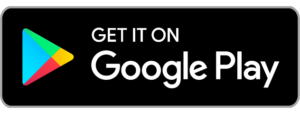Box Breathing
- Synchronized Music 00:00
How to Perform Box Breathing
Box Breathing is one of the most simple and straightforward breathing patterns, which is why it’s so versatile and widely used across combat situations, public speaking, and first response events.
Box breathing consists of four steps:
- First, begin by inhaling through the nose or mouth to the count of 4.
- Then, hold your breath to the count of four.
- Then, exhale to the count of four through the nose or mouth.
- Finally, finish by holding your breath to the count of four before inhaling again.
Box Breathing can be done for as little as thirty seconds (two rounds) or as long as 10 minutes.
Additionally, if you find Box Breathing to be difficult, you can modify the technique by changing the duration of each part from 4 seconds to 3 seconds (eg: inhale for 3 seconds, hold for 3 seconds, exhale for 3 seconds, and hold for 3 seconds).
For deeper relaxation, you can also try the Box+ technique for an even greater challenge.
Benefits of Box Breathing
Decreased Stress & Anxiety
There’s a reason US Navy Seals, first responders, and world-class performers use this breathing exercise to beat stress: it works. The short breath holds in between each inhale and exhale can help prevent panic attacks.
The slow breathing pace promotes deep, diaphragmatic breathing which helps activate the parasympathetic nervous system (rest-and-digest mode). The average person breaths 18 times a minute, putting them in a state of chronic hyperventilation. This pattern slows that down to just 4 breaths a minute, which is perfect for remaining alert yet calm.
Increased Cognitive Performance
Slow breathing patterns, like the Box or 4-7-8 technique, have been shown to increase higher-brain function and cognitive performance. This is likely due to increased blood flow and oxygenation of the brain that accompanies slower breathing techniques.
Focus
Counting is an effective and simple way to stay focused and alert. Mentally counting each part of the Box breath (“1″… “2”… “3”… “4”…) can help you detach from emotional or stressful situations and remain focused.
Increased performance and blood flow
By slowing down the breath, box breathing helps promote a healthy balance of oxygen and carbon dioxide and increases blood flow and oxygenation to the brain and body. Slow breathing increases the amount of Co2 and nitric oxide in the bloodstream, which in turn opens up blood vessels and causes cells to release their old, used oxygen molecules and pick up fresh oxygen molecules from the bloodstream.
Tips
Belly Breathe
Chest breathing is an emergency response, triggering our body’s fight-or-flight mode. Conversely, breathing out of the belly (diaphragm) stimulates the vagus nerve & activates the body’s parasympathetic nervous system, our rest-and-digest mode. It’s also considerably more efficient than chest breathing. Place one hand on your chest while you breathe and one hand on your stomach for a simple reminder to breathe out of your belly.
Nose Breathe
Noses are for breathing, mouths are for eating. Nose breathing is up to 20% more efficient than mouth breathing and leads to cleaner, warmer air for your lungs. Mouth breathing, on the other hand, is associated with higher rates of snoring, sleep apnea, allergies, and illness.
Inhale slowly, NOT deeply for anxiety
These breaths should be slow, but not too deep. Inhaling too much oxygen can actually lead to acute hyperventilation and trigger panic attacks & anxiety. Focus on gently sipping air through the nose on each inhale.
Origins
Box breathing famously comes from the US Navy Seals, and is sometimes called “Tactical” Breathing. The US military has been using the technique since at least the 1980s. Since then, it has become one of the most widely popularized breathing methods on Earth. It is used by professional athletes, first responders, and world-class performers to stay alert, focused, and calm.





